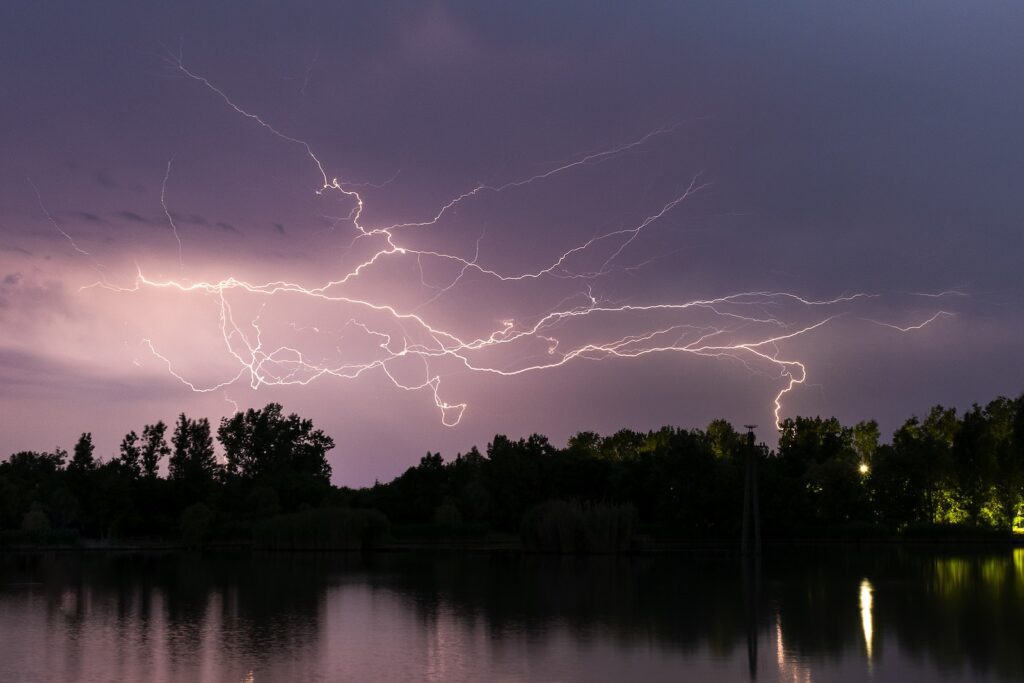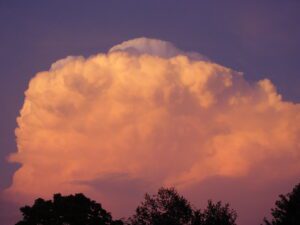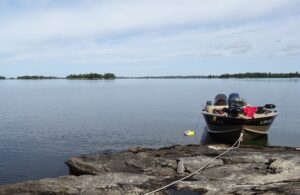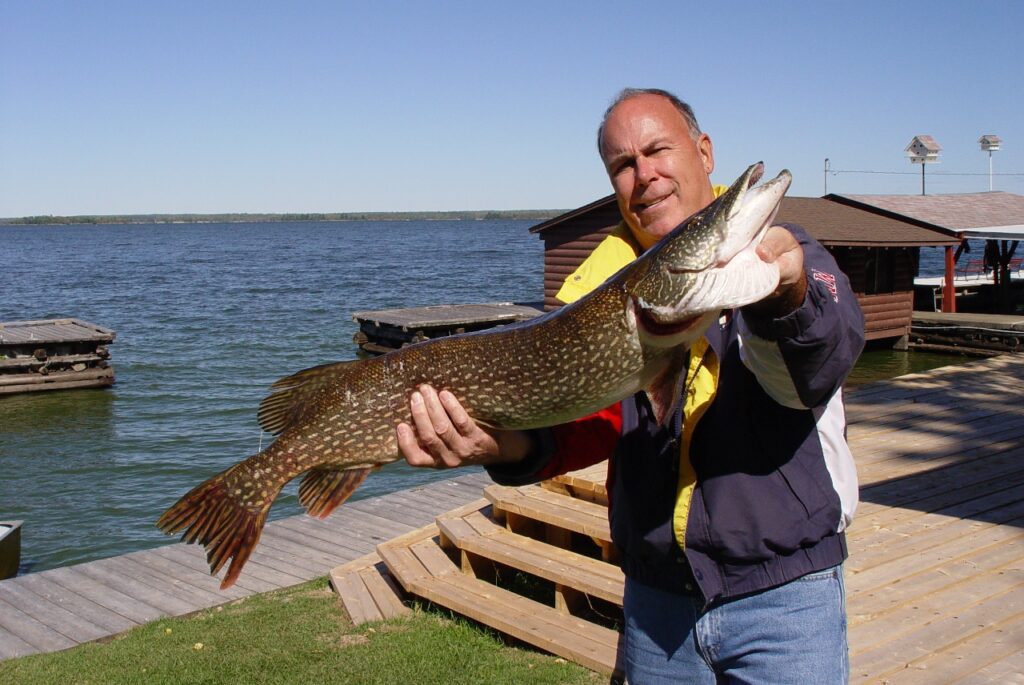It is really difficult to know exactly where to start when talking about lightning; there is so much known and written about it. For starters, a thunderstorm can be defined as any storm that contains lightning and thunder. And at any given moment, there are about 1800 thunderstorms of various intensities occurring around the earth – about 16 million per year!
(This page may contain affiliate links. Read our disclosure about affiliate links.)
If you look up the word hazard online, the first two definitions explain all you need to know (emphasis is mine):
- A source of danger
- a) the effect of unpredictable and unanalyzable forces in determining events : chance, risk
b) a chance event : accident
So Much to Know About Lightning
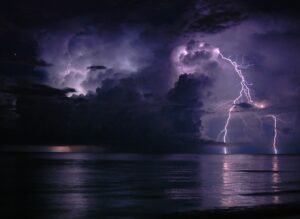
Of course, thunderstorms are, in and of themselves, a significant natural hazard, with the capability of producing things like damaging hail, tornadoes, high winds, significant rainfall and lightning. Sometimes all of these occur in a single storm. But I’ll concentrate only on lightning, for it will strike somewhere on the earth about a hundred times every second! Lightning researchers estimate that about 22 million lightning flashes strike the ground each year in the United States.
What’s the Risk?
So, why be worried? Most people are at least somewhat concerned – if not downright terrified – just by the word tornado or hurricane, yet never bother to think twice about dashing from a protected building outside to their cars in the pouring rain during a thunderstorm.
And how many people do you know that will remain on the lake until the last possible instant before making a mad dash back to camp when thunder and lightning are occurring all over the lake? (Isn’t fishing supposed to be excellent during a rainstorm?) Perhaps not enough fear exists in these people. They might be surprised to learn that, according to the National Weather Service Statistics, lightning kills more people each year than tornados and hurricanes combined! Worse, injuries caused by lightning can be extremely painful and debilitating, mostly because of the damage done to the brain and nervous system.
My first recollection of being on the water just prior to a storm was back in 1981. The day was one of those high humidity, very hot (about 90 degrees or so) and still days typically leading to major storms. We were casting on the back side of an island when I was told that my hair – much longer back then – was standing straight out. I had no idea as to what was going on, but as we rounded the island, I noticed a gigantic anvil head cloud building to the west. It seemed far enough away, but I was taking no chances and headed back to the resort, arriving just prior to an incredibly violent storm with lots of lightning.
What’s Happening Up There?
Under the right circumstances, unstable air that is loaded with moisture begins to rise and cool to form clouds. These clouds may reach heights of 50,000 feet or more where the temperatures are often well below freezing and the water droplets in the air form into ice pellets, banging into each other as they pass one another in rising and falling air currents.
The resulting friction causes electric charges to begin to separate. (As a kid, I learned quite by accident that similar friction – shuffling my feet along a carpet – would allow for quite a buildup of static charge with which I could zap my unsuspecting sister!) The bottom side of those cumulonimbus – rain bearing – clouds becomes increasingly negative in charge. An electrical imbalance intensifies within the cloud, as well as between the cloud and ground. The difference is that the charge created in clouds is many millions of times larger than that collected on one’s shoes after shuffling along a carpet… and far more deadly.
The fact that lightning is nothing more than a giant electrical spark should not be taken lightly. That spark can almost instantly heat the surrounding air to a temperature of 50,000 degrees Fahrenheit – five times hotter than the surface of the sun. The resulting thunder is from that same air expanding at an incredible rate and quite literally being ripped apart. The electricity generated can be one Billion volts – enough to light a 100-watt light bulb for three months. Only problem is – the electricity is delivered all at once.
Stepped Leaders, Streamers & a Channel
When the charge on the cloud is large enough, something called a stepped leader leaves the cloud, sort of “looking” for a path to follow. When this leader gets close to an object – oh, say, like your fancy new and expensive carbon fiber fishing rod – sticking up above the flat surrounding surface of the lake, something called a streamer leaps up from the object (your pole works well, but the human body can and does produce these positive streamers) and a connection called a channel is made.
ZAP! The brilliant flash of an electrical discharge takes place in the channel and you, your boat and everything in the area are history. What I didn’t realize on that hot and humid summer day was that I was at that point located smack dab in the middle of an ionizing path that is often the predecessor of a lightning strike.
The hair standing out on my head was the result of a streamer trying to connect with a stepped leader. Fortunately for me and many others wanting to get that last fish before the storm shuts fishing down, is the fact that not all stepped leaders and streamers connect. That fact alone is even more frightening to me. It means that lightning is extremely erratic and can strike anywhere, following a path of convenient least resistance.
Play it Safe
In fact, many of those struck by lightning are nowhere near the storm itself. One type of lightning – called positive lightning – can strike at a distance of as much as 6-10 miles away, either in front of or behind the rain core of the storm! If you can hear thunder, you are within ten miles of the storm and can be struck. And if you are on or in the water, which is a marvelous conductor of electricity, you are playing a dangerous game with the odds stacked against you.
The best advice is to follow something referred to as the 30-30 rule: when you see lightning, count the time until you hear thunder. If that time is 30 seconds or less, the thunderstorm is within six miles of you (on average, sound will travel about 1 mile in 5 seconds) and is dangerous. Get off the lake and seek shelter immediately. And certainly, stay away from items that conduct electricity – especially aluminum boats! Keep in mind too, that serious injury can result from ways other than a direct hit by a lightning stroke. These include electromagnetic pulses or EMP, from a nearby strike. An EMP can possibly even cause cardiac arrest.
Where to Take Cover
In the unfortunate event that you are “stuck” out on the lake and can perhaps only get to an island, the most important advice is to definitely avoid being the tallest object anywhere. Do NOT take shelter near or under the highest object, including tall trees. And a small shelter like an old shed will provide no protection from lightning. As a last resort only – get away from others and use the lightning crouch: put your feet close together, squat down low, tuck your head, and cover your ears.
Consider purchasing a portable lighting detector to keep with you in the boat and at other outdoor events.
Your best bet is to simply head for home at the first sign of a storm. At times, we all take much for granted. Don’t let lightning safety be one of them. We have all heard stories about people being struck by lightning. The odds of your being struck in your lifetime are 1 in 3,000. Don’t roll the lightning dice. Do whatever you can to keep from becoming a part of that statistic.
See you On the Lake!
R. Karl
Additional Resources, Links & Products
- Talos Lightning Strike Detector – Rugged Outdoor Lightning Storm Sensor – includes Mount for Vehicles, Boats, Golf Carts, ATVs (Amazon.com)
- Cobra MR HH350 FLT Handheld Floating VHF Radio – 6 Watt, Submersible, Noise Cancelling Mic, Backlit LCD Display, NOAA Weather, and Memory Scan

